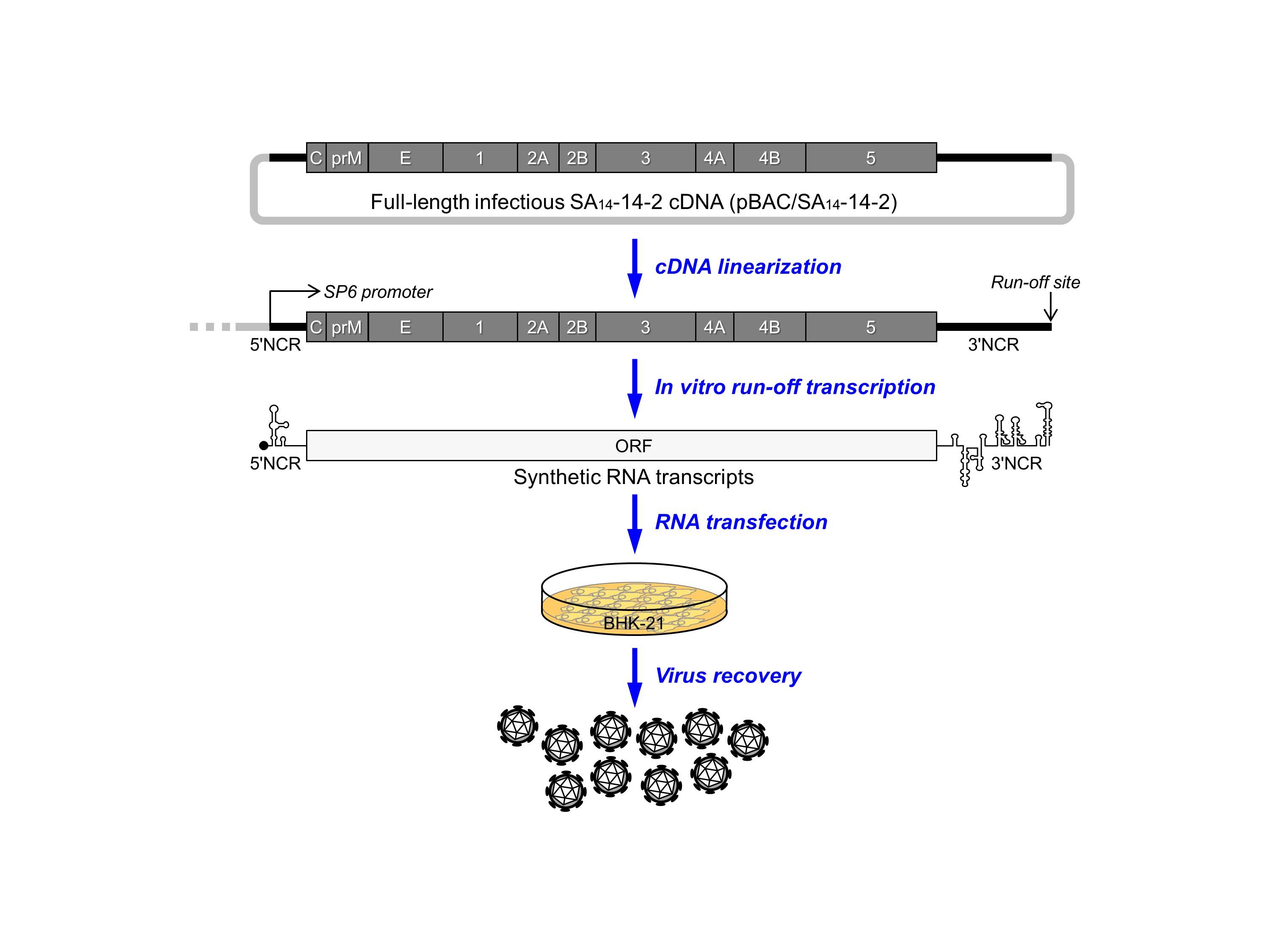Drug Target and Construct for Japanese Encephalitis Virus Infection
A method for targeting and treating Japanese encephalitis virus (JEV) and other RNA viruses using a full-length SA14-14-2 cDNA strand.
Problem
A group of mosquito-borne flaviviruses that cause fatal encephalitis in humans is among the most important of all emerging human pathogens of global significance. This group includes JEV, West Nile virus, St. Louis encephalitis virus, and Murray Valley encephalitis virus.
Solution
Dr. Lee’s lab has developed a reverse genetics system for SA14-14-2, a live JE vaccine that is most commonly used in JE-endemic areas, by constructing an infectious bacterial artificial chromosome that contains the full-length SA14-14-2 cDNA. Using this infectious SA14-14-2 cDNA, combined with a mouse model for JEV infection, researchers have identified a key viral neurovirulence factor and a conserved single amino acid in the ij hairpin adjacent to the fusion loop of the viral E glycoprotein (which regulates viral infectivity into neurons within the central nervous system in vivo and neuronal cells of mouse and human in vitro). Thus, the findings elucidate the molecular basis of the neurovirulence caused by JEV and other closely related encephalitic flaviviruses, a major step in understanding their neuropathogenesis.
Benefits
- opens up new approaches to the design of genetically modified anti-JEV vaccines with the ability to generate recombinant JEVs by targeted manipulation of the infectious JEV cDNA.
- enables investigation of the molecular mechanisms of viral replication and to identify the viral genetic factors involved in virulence and pathogenesis
- enables the creation of recombinant and synthetic viruses by targeted manipulation of a full-length infectious cDNA
- enables heterologous gene expression in a wide variety of eukaryotic cells for many applications in biomedical research
- improves stability of cDNA clones for both the virulent and highly attenuated vaccine strains of JEV and improves reverse genetics
- helps to reduce cost and time significantly
Applications
From a clinical perspective, the discovery of the viral neurovirulence factor and its role will have direct application to the design of a novel class of broad-spectrum antivirals to treat and prevent infection of JEV and other taxonomically related neurotropic flaviviruses.

Contact
Questions about this technology including licensing availability can be directed to:
Christian S. Iverson, MBA
Executive Director, Technology Transfer Services
(435) 797-9620 christian.iverson@usu.edu
USU ID # C13003

